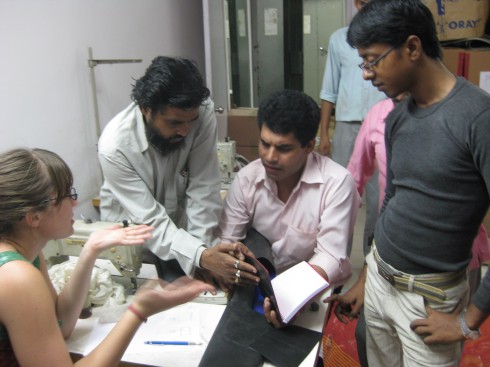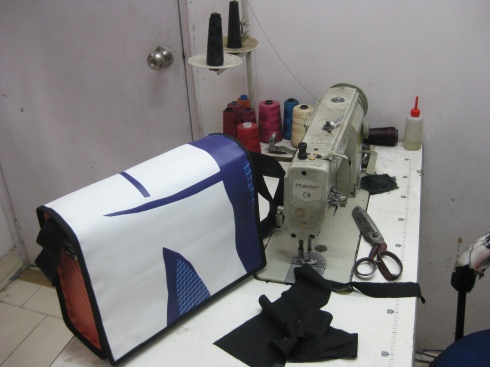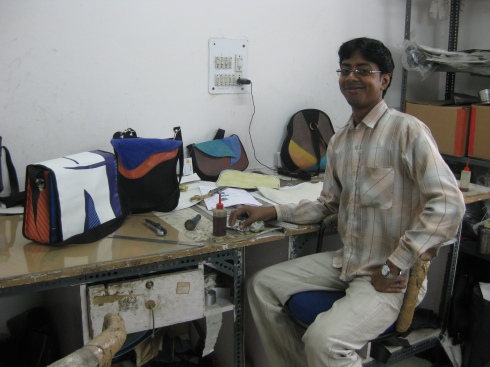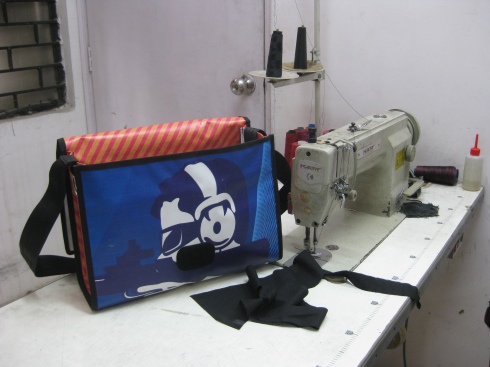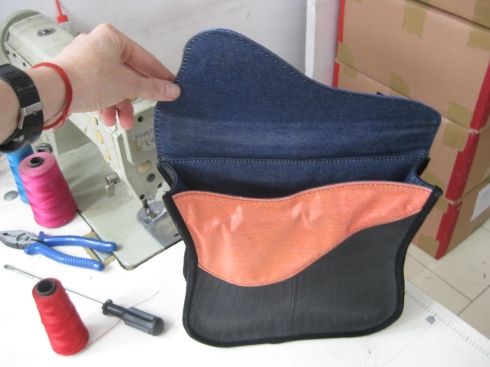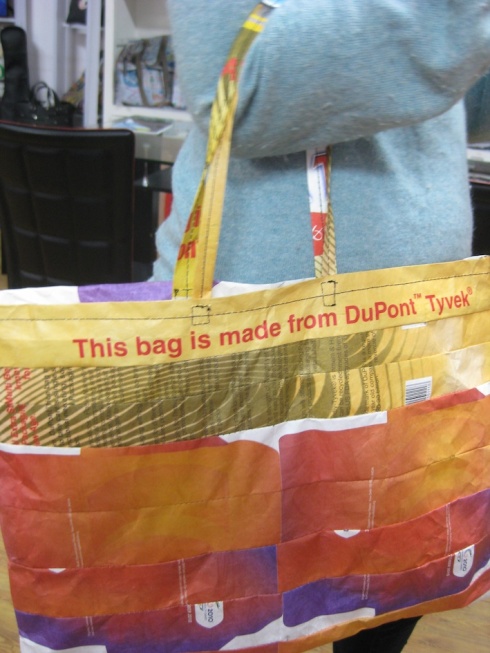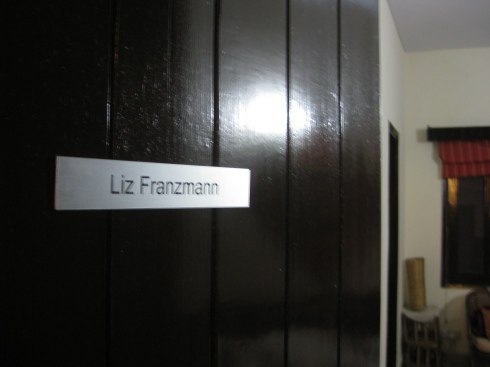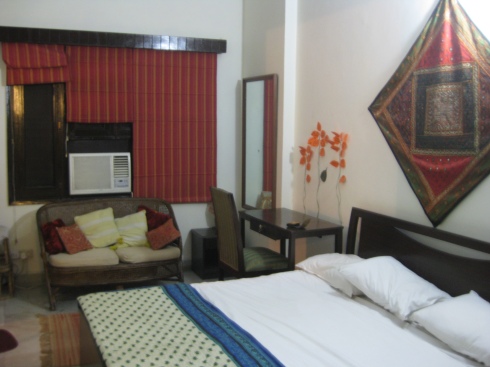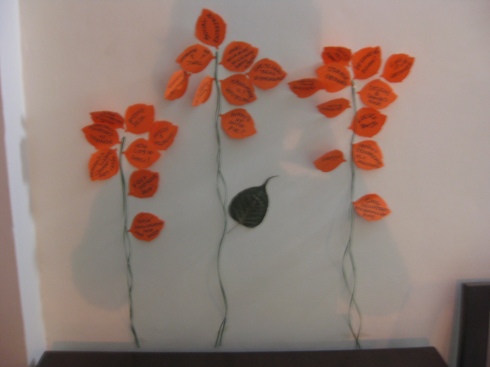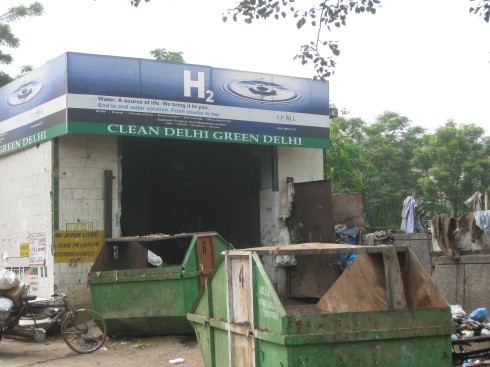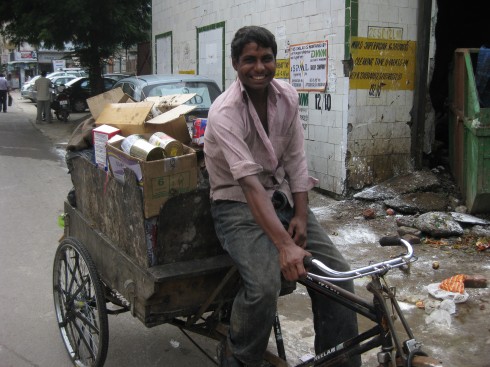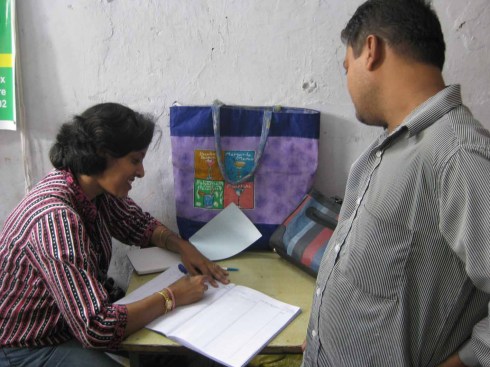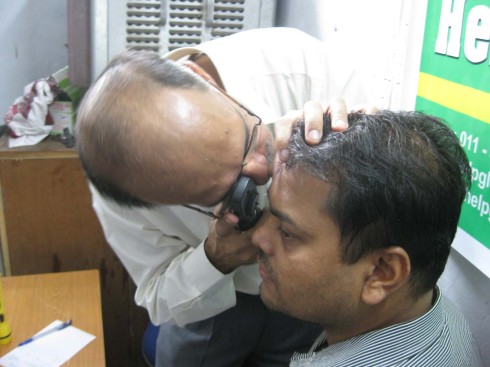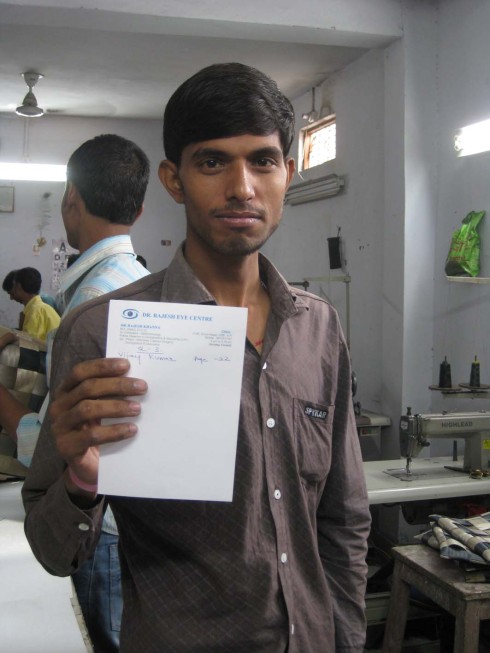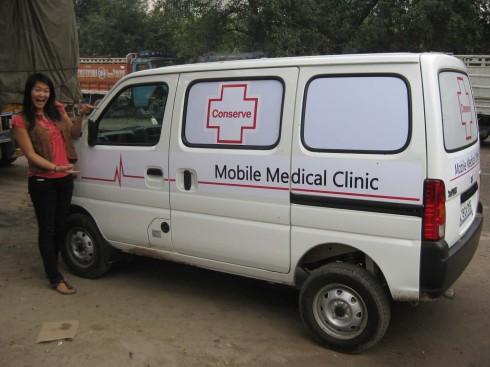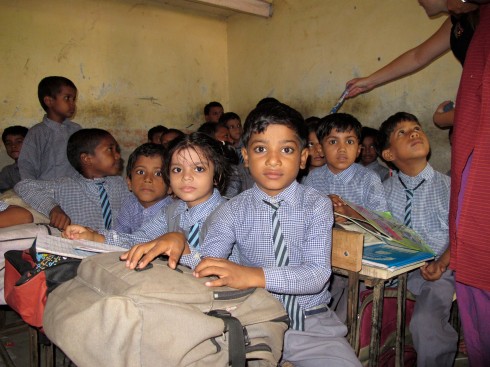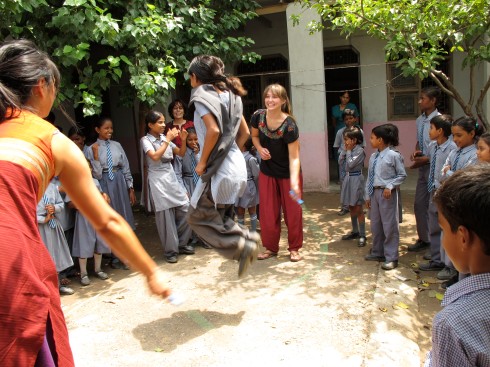Ok, so we’re heading into the home stretch with this project blog (just over a week to go until my final deadline: Sunday March 6). I know it’s been a while since I’ve posted about the Games PVC banner material.
So what happened to all those banners – all 25 tonnes of them?
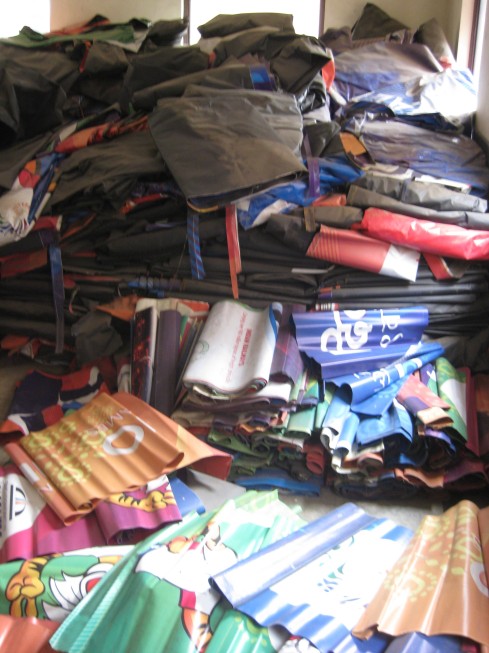
Commonwealth Games banners stored at the warehouse
We made a heap of products and sold them for stash of cash, right?
Not quite.
I was trialling one of the sample PVC bags, taking it to all my meetings, usually stuffed full of things like a Macbook laptop and a waterbottle (no point mucking around when it comes to R&D).
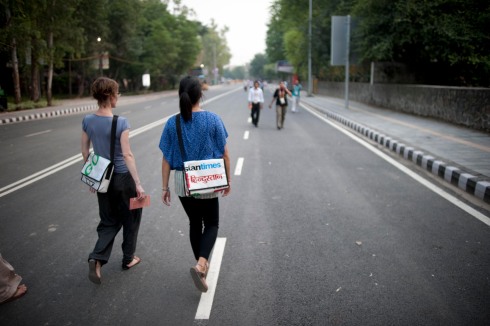
On the way to a 'very important' meeting at the 2010 Commonwealth Games
A few weeks of this and I began noticing cracks in the folds – the PVC banners from the Games media event just weren’t durable enough for a bag in constant use. But what about the official Games wall wrap banners? Could we still use them?

Checking out the wall wrap banner material with Conserve India's sampling unit
Sadly, it turned out they were made of a similar form of PVC.
It’s called blackout flex – basically polyester thread spray painted with a thin PVC resin coating. Great for cheap, temporary advertising applications, but not so good for a high-end, durable fashion accessory.
It felt like we’d hit a dead end with our Games upcycling experiment. We made one last visit to the warehouse, thinking we’d collect a couple of the wall wraps for future experiments with the material.
But when we arrived we noticed these…
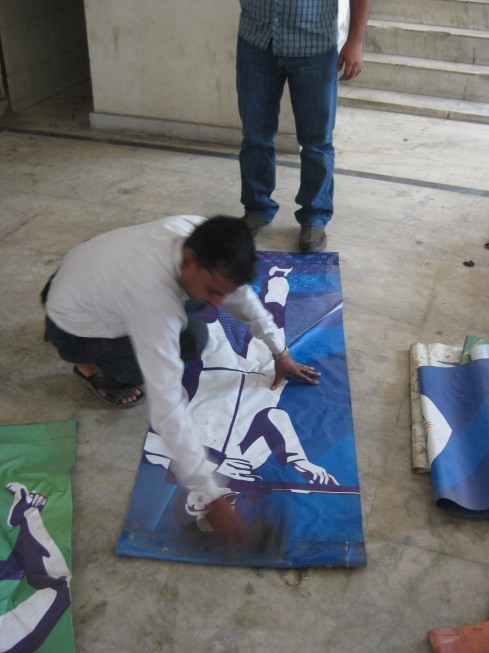
Delhi 2010 Commonwealth Games street flags

Air India and Tissot Games sponsor flags - major brands being trashed...literally
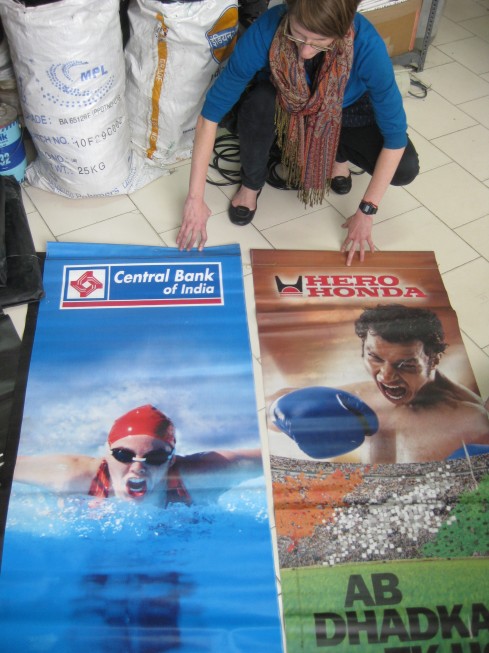
Hero Honda and Central Bank of India: do you know where your brand is being dumped?
They were street flags, strung up across the city for the Games and made from a tougher form of PVC (blockout flex).
So, with clouds of disappointment rapidly lifting, we took as many of the flags as we could manage and hurried back to Conserve’s workshop.
As for the wall wrap banners, as far as we know, they were sold as cheap scrap to the city’s waste dealers. We’d like to think they ended up serving a useful second purpose. However, we can’t be certain.
But one thing is for sure, dear readers, it’s a little insane in the brain making so many of them in the first place, let alone without much thought for what happens to them when the party is over.
Looking forward to showing you what we did with the flags…
Tags: Commonwealth Games, conserve delhi 2010, Delhi, delhi 2010, Games waste, Liz Franzmann, plastic waste, polyvinyl chloride, PVC, recycling, upcycled products, vinyl recycling, Waste
